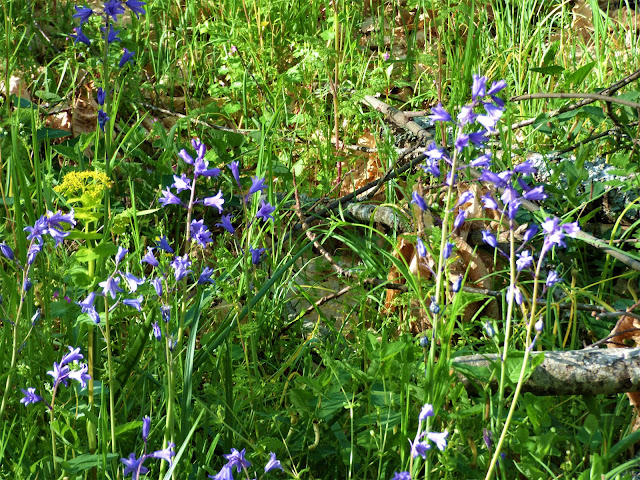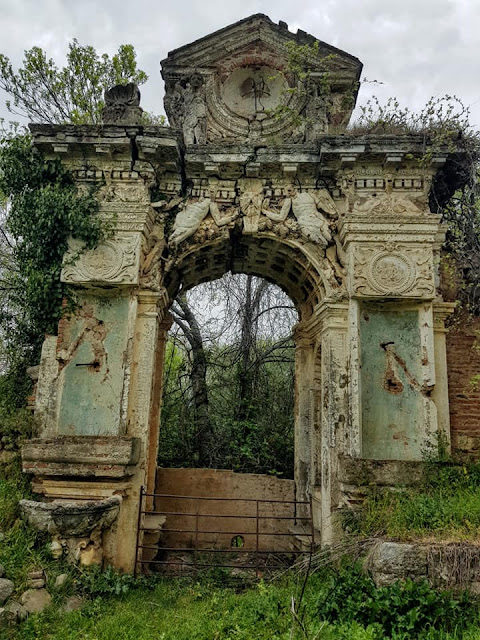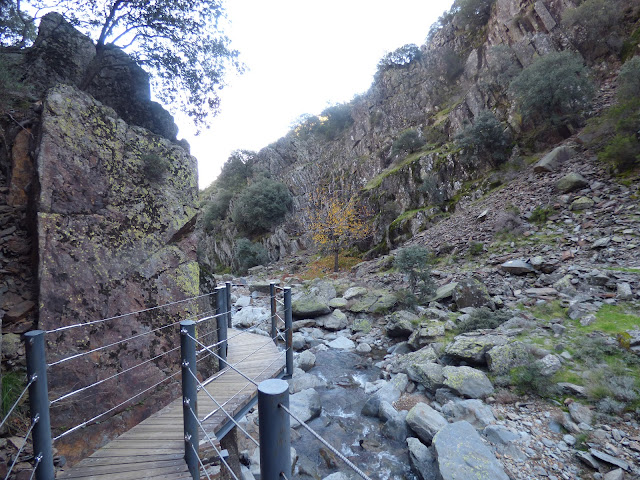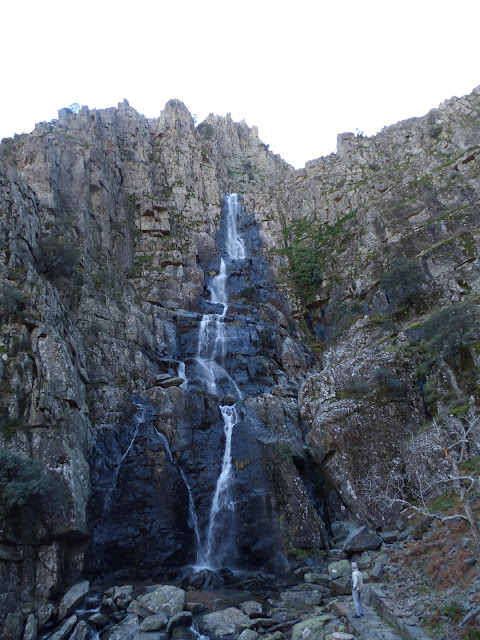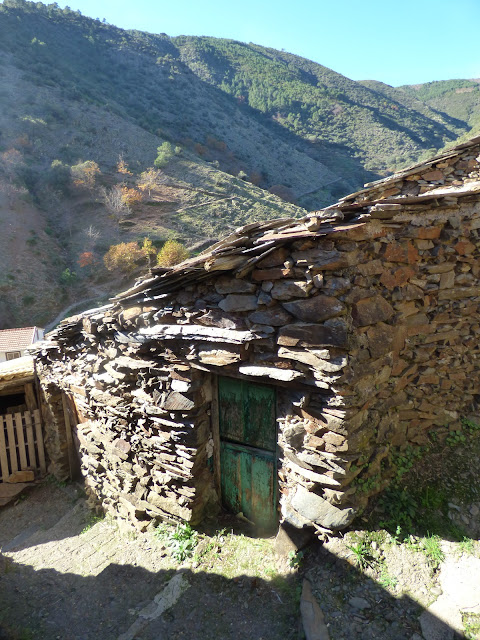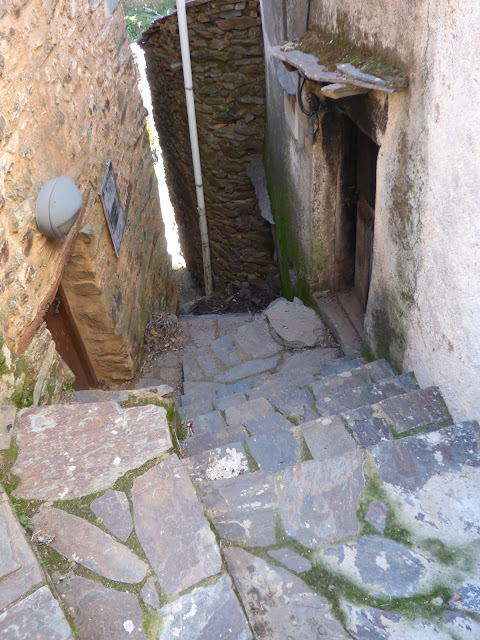Arranged a visit here last Tuesday, well worth the short trip, some good views of the Guadiana beyond the well know stretch at Merida. I suppose this was another reason for the position of this 1st century Roman villa, only 30 kms from Merida to Barbaño for river transport between the Roman settlements.
The site of the Roman Villa, Torre Águila, near the village of Barbaño, Badajoz is one of the most representative examples of rural Roman settlement in the fertile Vegas Bajas del Guadiana.
Aerial view
of the Roman Villa of Torre Águila
The Villa
has an intriguing history starting with its foundation 2000 years ago.
The surrounding scenery was very different from the irrigated landscape of today. The land was mainly planted with the newly imported olive trees, vines and cereal crops.
Built on a slight elevation the Villa was protected from the annual floods of the Guadiana, then known as Flumen Anas, the "River of Ducks". During the Moorish occupation and settlement, the name was extended and referred to as Wadi Ana, Wadi being the Arab term for river. Known later as the Ouadiana, and later just Odiana. Since the 16th century, due to Castilian influences, the name has slowly evolved to take on the form Guadiana.The site is very close to the important Roman road linking Merida with Lisbon, a strategic site for the foundation of a Roman settlement.
Discovery of Torre Águila
The
discovery of the site occurred by
chance, when some land was levelled to install irrigation. The baths from the first period of the town
were nearly destroyed before it was realized what lay under the earth.
The first excavations and studies were carried out in 1984, by Dr. Germán Rodríguez. Throughout these years, important findings have been discovered about the construction and the inhabitants of the town. It is a worldwide benchmark for the study of Roman villas.
It is
thought that among its first inhabitants was an Italian family, they built a sophisticated
house using decorative materials. Some elements of Northern Italian tableware
have been found. Few rooms are preserved from this phase, but an underground
room with functions of a cellar or barn stands out, which is supposed to be
accessed with a wooden staircase. The walls built with limestone blocks, avoid
the presence of insects and rodents.
There were major
reforms resulting in large
rustic villa. The remains dedicated to olive and wine processing reveal one of
the most complete wineries and oil mills in Roman Hispania, allowing us to get
a clear idea of the pressing, decanting and depositing process of the wine.
Also noteworthy is the thermal complex, so important in Roman life, with a hipocaustum ,floor heating system, caldarium,hot water bath, tepidarium warm water bath and
laconium, steam bath. The jewel of the archaeological site is a summer room which
is exceptionally complete with the
entire ceiling. It is an underground room (triclinium) used to mitigate the
summer heat. In the upper part there is a small semi-circular window, which
illuminates the room.
Torre Águila summer room
After a process of total abandonment, the villa resurfaces with the structure of a more monumental complex, demonstrating the power of the owner with a sumptuous house. The octagonal room and the improvements to thermal rooms stand out from this stage, with the addition of a large apoditerium ,dressing room . At this stage, a building with religious functions is built and an important necropolis will arise in its surroundings, which in later centuries (7th and 8th centuries) came to occupy a large part of the town that was already in ruins.
Octagonal Room. Villa Torre Águila
Remains of religious buildings. Villa Torre Águila
The
epidemics and the subsequent Arab invasions of 6th and 7th centuries caused the
abandonment and ruin of the Villa. Many of
the marble statues and ornaments are thought to have been destroyed and turned
to lime in times of epidemics.
A beautiful fibula, with a stylized shapes of eagles made
of gilt bronze, 9.5 cm long and 3 cm wide. Fibulae are pieces of decoration and
personal prestige, which were used symmetrically on the shoulders or in the
belt area as buckles. The beak is
very curved, the eye is formed by a blue vitreous paste. It has a central domed
shield in the shape of an almond. It is magnificent example of Visigoth goldsmith work of the “cloisonné” type (6th
century AD). There are only 6 of this type in the whole world.
Bronze mask
Dating from
the second century, there is a bronze fountain sconce, which represents a
tragic theatrical mask, and which constituted the fountain spout, possibly
attached to a wall. The water came out of the mouth. It is currently in the
Museum of Roman Art in Mérida (Badajoz).
The
successive reforms that the town has undergone meant the deterioration and the
scarcity of mosaics, but it is thought that at this stage there were rooms with
rich polychrome floors. To date, only one mosaic has been found that is
preserved underground. It is a geometric design with floral motifs and
concentric circles.
A Milestone
from the time of Constantine which preserves part of an
allusive inscription to Magnetius, one of the usurpers of the Lower Empire
(350-353 AD).
The area to
the northeast of the peristyle was used as a necropolis, with different burial
structures of the different stages. The mean age of life was 35-38 years for
women and 37-39 for men. The oldest found are Maxsomma and Dulcisus, with 81
and 93 years respectively. Inscriptions can be read on the marble tombstones,
where three proper names appear. Maxsoomma and Dulcisus could be married couple and
Epundius the dedicator of the inscription. It is currently in the Montijo City
Council (Badajoz).




















